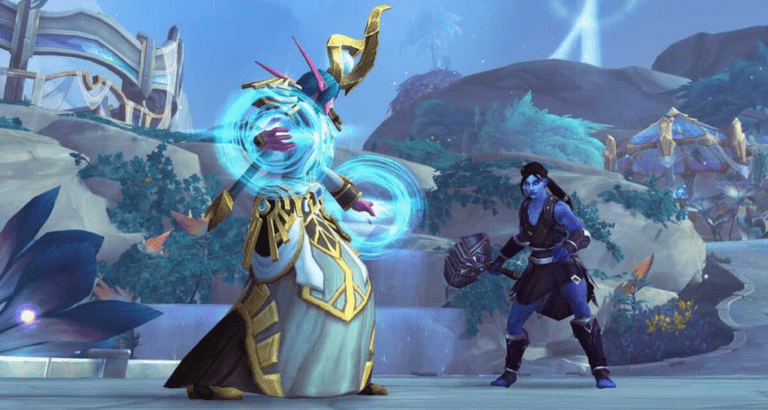Takeaway
Expanding your game portfolio through strategic partnerships with development studios can significantly enhance your creative output, diversify your offerings, and ultimately lead to increased revenue. By leveraging the strengths of established studios, you can access new technologies, tap into different markets, and streamline your development processes.
Understanding the Landscape of Game Development Partnerships
The gaming industry is evolving at an unprecedented pace, with new technologies and platforms emerging regularly. As a game development company, staying competitive requires not only innovation but also strategic collaboration. Partnering with a development studio can provide access to specialized skills, resources, and market insights that can help you expand your game portfolio effectively.

The Benefits of Partnering with a Development Studio
When considering a partnership with a development studio, it is essential to understand the myriad benefits that such collaborations can offer:
- Access to Expertise: Development studios often have specialized skills in areas such as graphics, AI, or user experience design. By partnering with them, you can enhance the quality of your games.
- Resource Sharing: Collaborating allows for the sharing of resources, including technology, tools, and even personnel, which can lead to cost savings and increased efficiency.
- Diversification of Portfolio: A partnership can enable you to explore new genres or platforms that you may not have the capacity to develop independently.
- Faster Time to Market: By leveraging the existing capabilities of a development studio, you can accelerate the development process and bring your games to market more quickly.
- Market Insights: Established studios often have valuable insights into market trends and player preferences, which can inform your development strategy.
Identifying the Right Development Studio
Choosing the right development studio to partner with is crucial for the success of your collaboration. Here are some key factors to consider:
1. Expertise and Specialization
Evaluate the studio’s expertise in specific areas that align with your project needs. For instance, if you are looking to develop a mobile game, consider studios that have a proven track record in mobile game development. Look for portfolios that showcase their best work and assess whether their style and quality match your vision.
2. Cultural Fit
A successful partnership requires a shared vision and compatible company cultures. Assess the studio’s values, work ethic, and communication style. A cultural mismatch can lead to misunderstandings and hinder collaboration.
3. Financial Stability
Ensure that the studio you are considering is financially stable. A partnership with a financially unstable studio can jeopardize your project and lead to delays or even project abandonment. Review their financial history and current projects to gauge their stability.
4. Reputation and Reviews
Research the studio’s reputation within the industry. Look for reviews, testimonials, and case studies from previous clients. A studio with a strong reputation is more likely to deliver quality work and maintain professionalism throughout the partnership.
Establishing a Partnership Framework
Once you have identified a suitable development studio, the next step is to establish a partnership framework that outlines the terms of collaboration. This framework should include:
1. Clear Objectives
Define the goals of the partnership. Are you looking to co-develop a game, or will the studio handle specific aspects of development? Clear objectives will help align both parties and set expectations.
2. Roles and Responsibilities
Clearly delineate the roles and responsibilities of each party. This includes who will handle project management, design, programming, and quality assurance. A well-defined structure will minimize confusion and ensure accountability.
3. Financial Arrangements
Discuss financial arrangements upfront. This includes revenue sharing, payment schedules, and any upfront costs. Transparency in financial matters is crucial for maintaining a healthy partnership.
4. Communication Protocols
Establish communication protocols to ensure that both parties are on the same page throughout the development process. Regular check-ins, progress reports, and feedback sessions can help maintain momentum and address any issues promptly.

Leveraging Technology and Tools
In today’s game development landscape, technology plays a pivotal role in the success of any project. When partnering with a development studio, consider the following:
1. Game Engines and Development Tools
Ensure that both parties are comfortable with the game engines and development tools being used. Popular engines like Unity and Unreal Engine offer extensive resources and community support, making them ideal choices for collaboration.
2. Version Control Systems
Implement version control systems such as Git to manage code changes and collaborate effectively. This is particularly important when multiple developers are working on the same project, as it helps prevent conflicts and ensures that everyone is working with the latest version of the code.
3. Project Management Software
Utilize project management tools like Trello, Asana, or Jira to track progress, assign tasks, and manage deadlines. These tools can enhance collaboration and keep the project organized.
Marketing and Distribution Strategies
Once your game is developed, effective marketing and distribution strategies are essential for its success. Collaborate with your partner studio to create a comprehensive marketing plan that includes:
1. Target Audience Analysis
Identify your target audience and tailor your marketing efforts accordingly. Understanding player demographics, preferences, and behaviors can inform your promotional strategies.
2. Social Media and Community Engagement
Leverage social media platforms to build a community around your game. Engage with players through regular updates, behind-the-scenes content, and interactive posts. A strong community can drive word-of-mouth marketing and increase player loyalty.
3. Distribution Channels
Choose the right distribution channels for your game. Whether it’s through Steam, the Epic Games Store, or mobile app stores, ensure that your game is accessible to your target audience. Collaborate with your partner studio to optimize the distribution strategy based on their experience and insights.
Measuring Success and Iterating
After launching your game, it’s crucial to measure its success and gather feedback for future projects. Consider the following metrics:
1. Sales and Revenue
Track sales figures and revenue generated from your game. This data will help you assess the financial success of your partnership and inform future decisions.
2. Player Feedback
Gather feedback from players through reviews, surveys, and community engagement. Understanding player experiences can provide valuable insights for improving future games.
3. Performance Metrics
Analyze performance metrics such as player retention, engagement rates, and in-game purchases. These metrics can help you understand how well your game is performing and identify areas for improvement.
Conclusion
Expanding your game portfolio by partnering with a development studio can be a transformative strategy for your game development company. By leveraging the expertise, resources, and market insights of established studios, you can enhance your creative output, diversify your offerings, and accelerate your time to market. Remember to choose the right partner, establish a clear framework for collaboration, and continuously measure success to ensure a fruitful partnership.
Key Takeaways:
- Strategic partnerships can enhance your game development capabilities.
- Choosing the right development studio is crucial for success.
- Establishing a clear partnership framework helps align objectives and responsibilities.
- Leveraging technology and tools can streamline the development process.
- Effective marketing and distribution strategies are essential for game success.
- Measuring success and gathering feedback is vital for continuous improvement.
By following these guidelines, you can effectively expand your game portfolio and position your company for long-term success in the competitive gaming industry.

